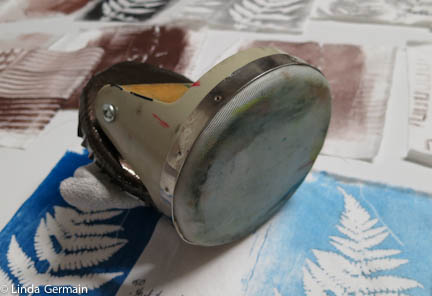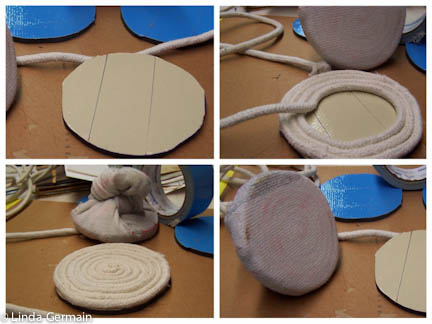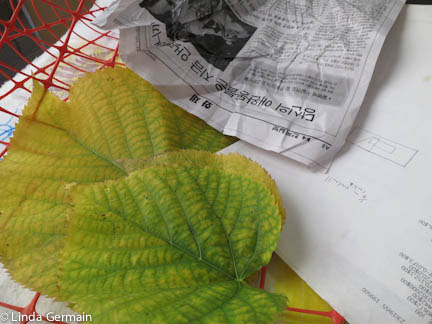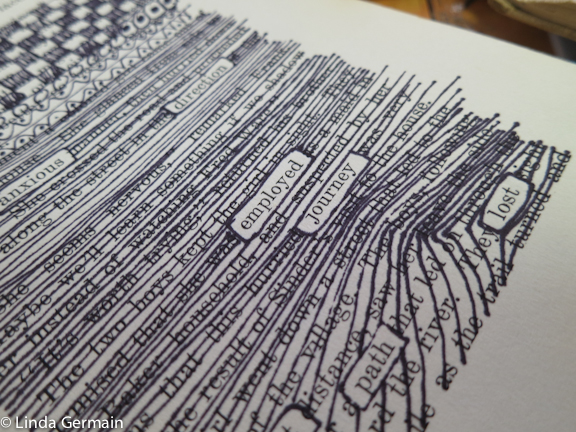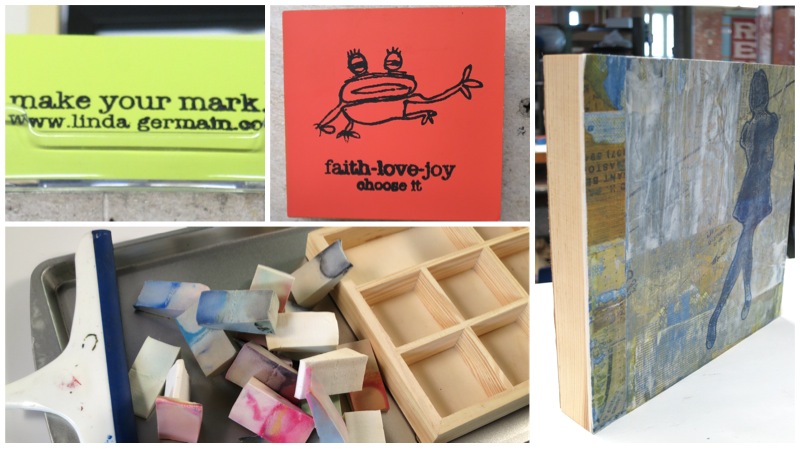How to Choose a Brayer for Gelatin Printmaking?
Not all brayers are created equal. There are several different types.
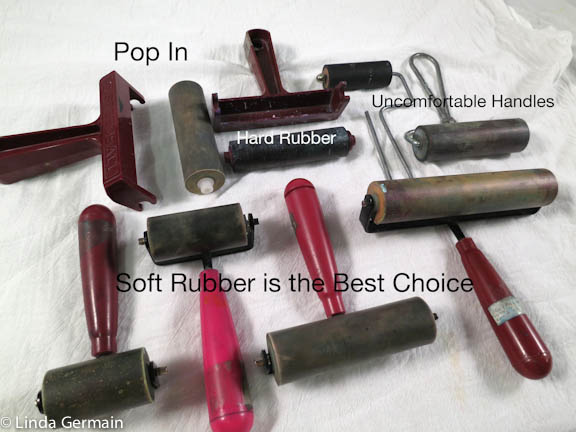
But with any type you still want it:
- To spin easily and evenly
- To spin quietly ( squeaky brayer will drive you nuts)
- Be comfortable to hold in your hand
- To pick up and roll out ink in the desired fashion
You can find:
- Soft Rubber brayers
- Hard Rubber Brayers
- Pop in brayers
- Foam paint Rollers
- Craft Brayers that can be carved
For printmaking on the gelatin and glycerin plate you want soft rubber brayers. They pick up the ink evenly and release it on to the plate easier than the other types.
The other types of brayers or paint rollers are less expensive, but they will create frustration while trying to make monotype prints that you love.
The pop-in style do not spin as easily or evenly. The metal handled style can be uncomfortable if you are printing for a long time. Hard Rubber do not pick up and release as easily.
It is also great if you can have several brayers of different sizes. The speedball soft brayers come in sizes 1 1/2″ to 6″ widths.
It is nice to have a small brayer to get into tiny spaces. And a large brayer will give you better coverage with less lines when you are inking up a large area. You will waste less ink if you use the brayer that meets the size of your project.
Try to take care of your brayers. If you do they will last a very long time. Here are a couple of brayer care suggestions if you are working with water based inks:
- While you are working try not to let acrylic or other hard products to dry on the brayer.
- I keep a small container of water near by to drop my brayer in while I am setting up a print
- Before you clean, roll off most of the unused ink onto scrape paper
- Clean with tepid water and a few drops very mild soap
- Be sure to get out all the ink from the cross bar and side pins.
- If you let ink build up there, then the brayer will not spin as well
- Gently dry them with clean soft rags
- Rest them on the metal crossbar rather than the rubber roller
Gather up your brayers and join us in the next printmaking class.
How to Choose a Brayer for Gelatin Printmaking? Read More »
